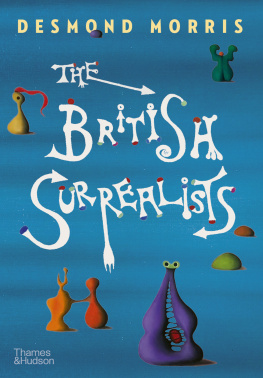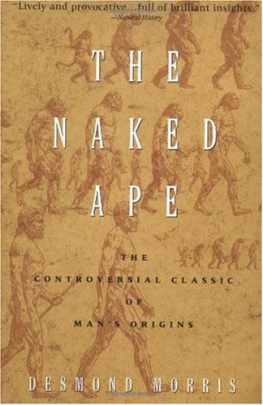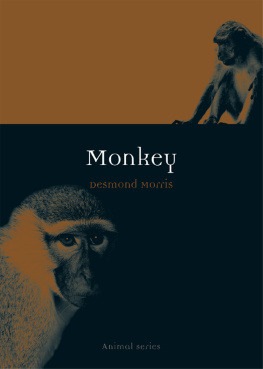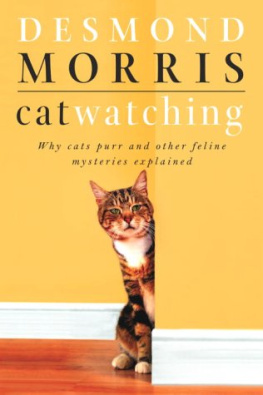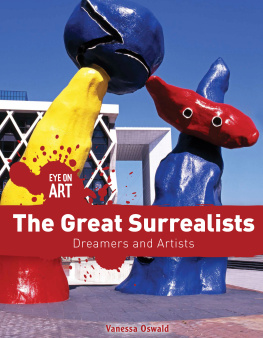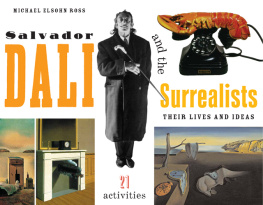


___________________________
Front cover of Herbert Reads 1936 book Surrealism, with a collage by Roland Penrose.
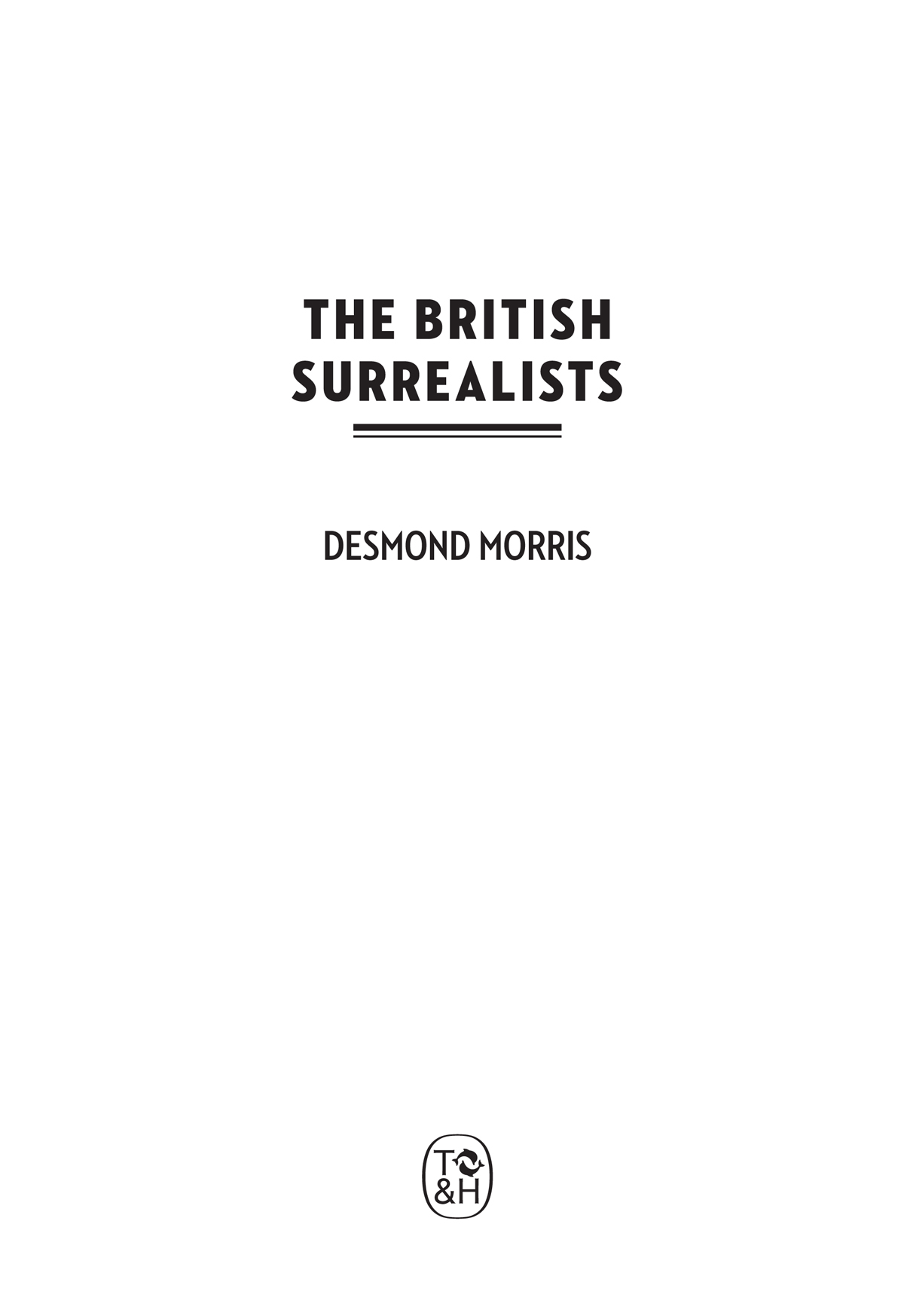
CONTENTS
About the Author
Desmond Morris is one of the last surviving Surrealists. His first solo exhibition was held in 1948 and in 1950 he shared his first London show with Joan Mir. He has since completed over 2,500 Surrealist paintings, and eight books have been published about his work. He has also written many books, one of which The Naked Ape ranks among the top 100 bestsellers of all time, with over 12 million copies sold.
Other titles of interest published by Thames & Hudson include:
The Lives of the Surrealists
Desmond Morris
Postures: Body Language in Art
Desmond Morris
Significant Others: Creativity and Intimate Partnership
Edited by Whitney Chadwick and Isabelle de Courtivron
Women Artists and the Surrealist Movement
Whitney Chadwick
Be the first to know about our new releases,
exclusive content and author events by visiting
www.thamesandhudson.com
www.thamesandhudsonusa.com
www.thamesandhudson.com.au

___________________________
Free Unions, published by The Surrealist Group in England and edited by Simon Watson Taylor, July 1946, front cover design by Conroy Maddox.
I n 2014 I began work on a book that was designed to present short biographies of all the better-known surrealists. I wanted to find out as much as I could about the personalities of the artists involved in the surrealist movement. My library was full of monographs about their work, but I wished to know more about what sort of lives they lived and how their backgrounds had influenced their creativity. I became so absorbed in this project that it soon started to get out of hand. I kept finding more and more artists who were either fully committed but less well-known surrealists, or who were major figures that were in some way related to the movement but without being fully involved with it. I went on adding more and more artists until, to my surprise, I had assembled biographies of 100 of them at which point I reluctantly called a halt.
My text was now far too long for a single volume, and it was decided to select just those artists who had been most prominent in the movement or who had become most renowned on an international scale. This meant removing about two-thirds of the 100 biographies, including most of the British surrealists. The resulting book, The Lives of the Surrealists, was published in 2018. It was soon joined by editions in Spanish, Italian, German, Danish, Czech, Russian and Chinese. The only British figures that made the cut were Eileen Agar, Francis Bacon, Leonora Carrington, Conroy Maddox, Henry Moore and Roland Penrose. There were many more who, although serious artists deserving recognition, were not familiar on the international scene. The same is true elsewhere. There are surrealist artists who are well known in, say, Denmark, Hungary or Portugal, but who are virtually unknown outside their own countries. In the case of the British surrealists, there is a particularly fascinating range of eccentric, idiosyncratic artists who may not be feted abroad, but who have played an important role in the history of modern art in Britain.

___________________________
Front cover of the last edition of the surrealist London Bulletin, published in June 1940 by The Surrealist Group in England, with a work by Giorgio de Chirico on the cover.
So I am delighted that it is now possible to gather in this new volume all the British surrealists who were numbered among my original 100 artists, plus a few more. The six who did appear in The Lives of the Surrealists could not be omitted here, of course, and I apologize for the slight repetition that this involves.
Thanks largely to Roland Penrose, who was the main driving force behind the great surrealist exhibition in London in 1936, the British surrealist movement has been a vigorous presence for many years. For the purposes of this book, however, I have confined myself to those artists who were active when the movement was in its heyday in the inter-war period. As an organized art movement, with group meetings, discussions and exhibitions, British surrealism went into decline shortly after the end of World War II. For me personally this was a disaster because no sooner had I joined the movement the 1940s than I found it collapsing around me. Its effective end came with the closure in 1951 of the London Gallery, which had been its headquarters and its focal point for exhibitions, publications and meetings. I was no longer able to enjoy the noisy debates of the group meetings and the endless arguments about the finer points of surrealist philosophy.
On an international scale, however, surrealism was far from dead, with most of the leading surrealists although now widely scattered in Europe and the Americas continuing to produce work for many years. In addition, a new generation of younger surrealists appeared and, even today in the twenty-first century, surrealism remains an active force, having outlived all the other specialized art movements that flowered in the aesthetic rebellions of the early twentieth century. The group meetings, the Bretonesque rules and regulations, and the infamous expulsions may have faded into history, but the spirit of surrealist rebellion has managed to survive. Like me, many of the other British surrealist artists also remained active long after the official disbanding of the London group. We may no longer have been a close-knit, organized circle, but separately we each continued to create new work.
In addition to restricting my text to the British artists who were working before World War II, I have also limited it in another way, by including only those surrealists who were visual artists and who created paintings, sculptures or surrealist constructions. I have omitted the surrealists who solely wrote books, poems or pamphlets, or who confined themselves to making films or photographs. For an in-depth discussion of the wider surrealist movement in Britain, see Michel Remys landmark study Surrealism in Britain (1999).

___________________________
List of artists included in the 1936 International Surrealist Exhibition, taken from the exhibition catalogue.

___________________________
Poster for the International Surrealist Exhibition at the New Burlington Galleries in London, JuneJuly 1936.
Finally, I should mention that, when I was a young surrealist in the 1940s, I was fiercely doctrinaire and totally intolerant of all artists who were not party members. In those days there was such strong opposition to surrealism from society at large that we had to band together as a besieged little group. Later, when I was developing my public career as a zoologist, I continued to produce surrealist paintings, but I could no longer be called a doctrinaire party member. In retrospect I do not think that that reduced the surrealist validity of my works of art. In fact, I think my separation from any surrealist group helped me to develop and mature my own form of art.
Next page
